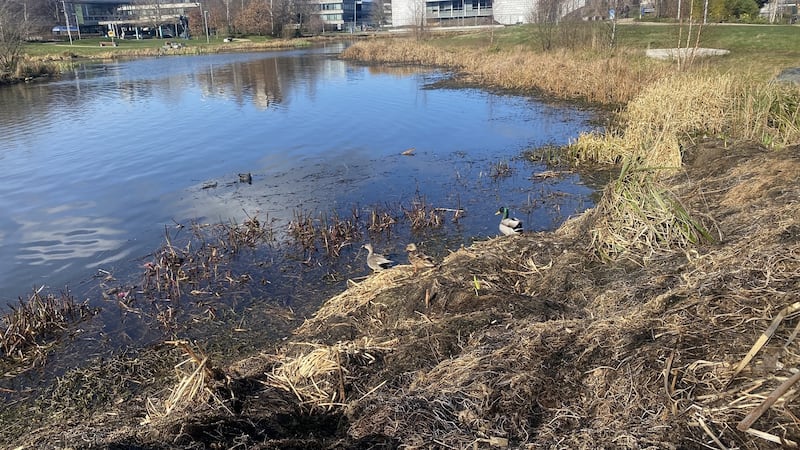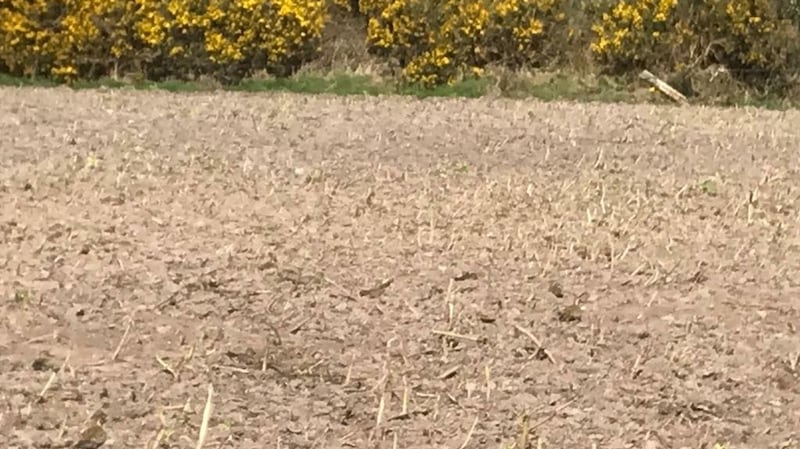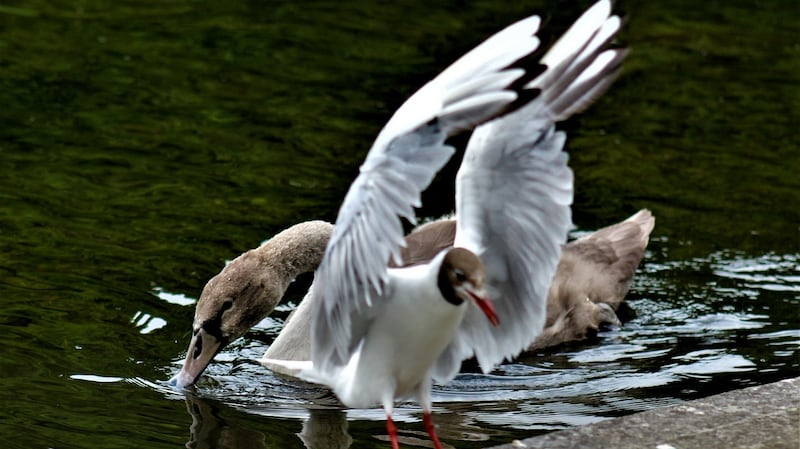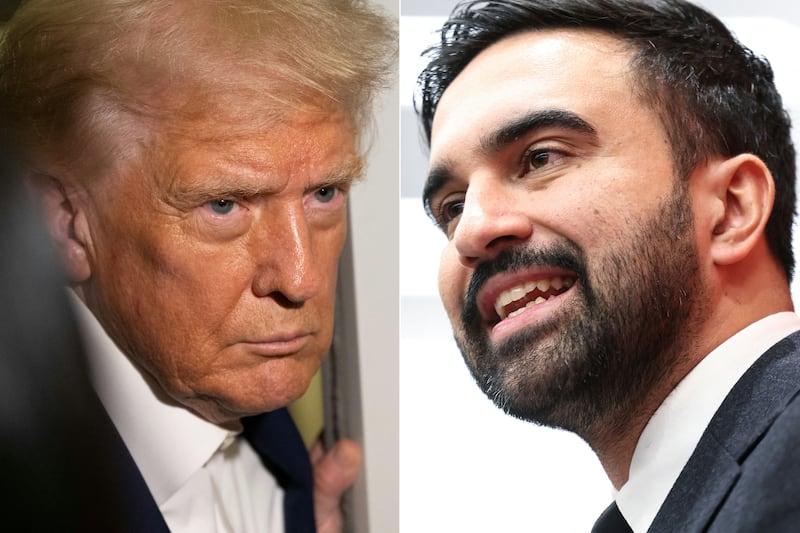I have had blue tits in my nestbox for the past 10 years. This year a blue tit is continuously pecking around the entrance hole; it's like the sound of a woodpecker. Is it trying to attract a partner or just make the hole bigger? – Frank Curran
Blue tits often seem compelled to peck extensively at the entrance hole of a nestbox before using it, removing small pieces of wood. A theory for this behaviour is that natural tree cavities would rarely be perfect, so the tits have evolved this pecking behaviour as a way to ensure that splinters are removed and the hole is exactly the right size. Even when presented with a nest hole that is perfect, as in a nestbox, they simply can't switch this innate behaviour off. In turn, this activity may have become an important bonding ritual for blue tit pairs prior to nesting.

This duck is in the company of the mallards on the lake in UCD. Is it a male gadwall? – Gearoid Stanley
It is indeed a drake gadwall. The black rear end and the white patch in the closed wing are very distinctive in this species. It is a fairly scarce and localised bird in Ireland that usually tends to avoid humans, so it is unusual for one to take up residence in such a public location.

These birds are landing regularly on our farm, on a bare field. They sound like seagulls and swarm together while flying. – Jack Murphy
These well-concealed birds in the photo are golden plovers. They can gather into impressive flocks outside of the breeding season, almost resembling starling murmurations.

Why are they called black-headed gulls? – Eavan Curneen
It is fairly obvious why when you see them in full breeding plumage – as in this lovely photograph – with a black head and slender red bill and legs. But these freshwater inland gulls lose the black head in winter. They then have a white head with a dark patch behind the eye and a smaller smudge in front. Don't confuse them with the newly arrived lovely slender terns, also with black heads.
Have you a nature query, observation or photo you would like to share with The Irish Times? Submit it, with location of the image, via our website irishtimes.com/eyeonnature


















